Table of contents
Rice noodles are usually only 2 mm thick noodles made from rice flour. They are also called rice spaghetti or rice vermicelli. They are traditionally eaten in soup or fried together with vegetables and tofu as a wok dish.
Use in the kitchen
Chinese rice noodles are made from rice flour and water. They are usually bought dried in portion balls. There are also flat, wide rice noodles, which are known as rice ribbon noodles. When cooked, their health value is comparable to that of pasta made from white wheat flour or durum wheat semolina. One positive difference is that they are gluten-free, if this is clearly declared. The cooking time for rice noodles is much shorter than that for pasta made from wheat. Rice noodles are therefore a gluten-free pasta substitute, for example for a coconut and pumpkin pasta.
How do you cook rice noodles? You don't need to cook the thin rice noodles. Just pour hot water over them and let them sit for 1-2 minutes. Then you can add them to a soup, for example a Vietnamese Pho soup or a Malaysian Laksa curry soup.
Is there a difference between rice noodles and glass noodles? Rice noodles are not glass noodles. Glass noodles are made from water and starch extracted from peas, corn or mung beans. Rice noodles retain their whitish color after cooking, whereas glass noodles are transparent.
Homemade preparation
To prepare rice noodle spaghetti, use a pasta machine or a potato press. For the dough, use 180 g rice flour (made in Thailand), 20 g tapioca starch, 160 ml boiling water, 1/2 teaspoon lime juice, 1/4 teaspoon salt and 2 tablespoons oil (rapeseed oil).
Put the rice flour, boiling water, lime juice, salt and oil in a bowl and knead well with a food processor for 3 to 5 minutes. Then gradually add the tapioca starch. Allow the dough to cool slightly and knead well with your hands for a few minutes. Press the dough through a pasta machine or potato press directly into the boiling water and cook until the noodles float to the top. After cooking, rinse the noodles with cold water and then rinse in a sieve with warm water. 13
Vegan rice noodle soup (Pho)
Ingredients (for 4 people): 1 onion, 8 cm ginger, 1 cinnamon stick, 3 star anise, 3 cloves, 1 tbsp coriander, 1 l low-salt vegetable stock, 4 dried shiitake mushrooms, 200 g button mushrooms, 2 tbsp rice vinegar, 2 tbsp soy sauce (tamari), 250 g rice noodles, 80 g mung bean sprouts, 1 spring onion, 1/4 bunch coriander leaves, 1/4 Thai basil (horopa), 1 lime.
Preparation: Peel and dice the onions and ginger. Wash the shitake and mushrooms and cut into pieces. Put the spices in a large pot and roast while stirring until they start to smell. Pour in the vegetable stock, add the onions and ginger, shitake and mushrooms, bring to the boil and then simmer for approx. 30 minutes. Season with rice vinegar and soy sauce. Put the rice noodles in a bowl and pour boiling water over them and leave to swell for 2-3 minutes, then remove the rice noodles, rinse with cold water and drain. Wash the mung bean sprouts, spring onions and herbs. Cut the green part of the spring onion into fine rings. Divide the rice noodles into bowls. Pour the hot soup over it and garnish with sprouts, spring onions, herbs and a lime wedge and serve immediately.
Vegan recipes with rice noodles can be found under the note: " Recipes that have the most of this ingredient ".
| Not only vegans or vegetarians should read this: Vegans often eat unhealthily. Avoidable nutritional errors. |
Purchasing - Storage
Dried rice noodles can usually be found in the range of large supermarket chains such as Coop, Migros, Denner, Volg, Spar, Aldi, Lidl, Billa, Rewe, Edeka or Hofer, occasionally also in controlled organic quality (organic quality). However, some discounters only stock them during special promotions. Rice noodles can also often be bought in organic supermarkets such as Denn's Biomarkt or Alnatura, as well as in Asian shops.
When producing rice noodles, they are heated several times, which is why they are no longer considered raw food (more on this under Industrial Production).
The availability of rice noodles ('spaghettini', vermicelli) in the supermarkets mentioned varies depending on the size of the store, catchment area, etc. If you are interested, click on our recorded food prices for the DA-CH countries (above under the ingredient image). There you will find current prices from various supermarkets and their price development.
Storage tips
Dried rice noodles can be stored like pasta made from other grains. They should be stored in the original packaging or in a closed container in a cool, dry and dark place. This way they will last for around a year or until the best-before date. 2
Ingredients - Nutritional values - Calories
Dried rice noodles (organic) contain 364 kcal per 100 g. With 0.56 g fat and 1.6 g dietary fiber per 100 g, they are low in fat and fiber. Rice noodles contain carbohydrates (80 g/100g) and little protein (6.0 g/100g). The salt content is 462 mg/100g. 1
Rice noodles, like the white long grain rice from which the noodles are made, contain selenium, manganese and some important amino acids. However, the ingredients are drastically reduced when cooked, so that cooked rice noodles contain very little nutritional value. Calories compared to cooked pasta: Ribbon noodles 142 kcal, durum wheat noodles 156 kcal, soy noodles 155 kcal, spaetzle 164 kcal, tagliatelle 159 kcal. When raw, this is practically always several times more calories. One kcal corresponds to 4,184 kJ.
Each 100 g contains 15 µg of selenium, which corresponds to 27.0% of the daily requirement. However, the selenium content varies greatly depending on the growing area of the long-grain rice from which the rice noodles are made. Wholemeal corn flour (15 µg/100g) and amaranth (19 µg/100g) have similar selenium contents. Brazil nuts (Bolivia) contain a lot of selenium. 2 nuts cover the daily requirement of selenium. 1
The manganese content is 0.50 mg/100 g, which corresponds to 25.0% of the daily requirement. Cooked lentils (0.49 mg/100g) and sprouted lentils (0.51 mg/100g) have similar values. Teff (dwarf millet) contains a lot of manganese, which, with its 0.9 mg per 100 g, covers around 462.0% of the daily requirement. 1
Although the protein content of rice noodles is low, they still contain valuable amino acids. 100 g of rice noodles contain 0.07 g of tryptophan, which corresponds to 29.0% of the daily requirement. A similar amount of tryptophan is found in cooked lentils and cooked chickpeas, both of which contain 0.8 g/100. The essential amino acid threonine is also present in abundance. With 0.21 g per 100g, it covers 23.0% of the daily requirement. Peas (0.21 g/100g) and carrots (0.19 g/100g) have a similar content. 1
The complete ingredients of rice noodles, the coverage of the daily requirement and comparison values with other ingredients can be found in our nutrient tables. In the article Nutrients explained you will get a detailed insight into the topic.
Effects on health
Rice noodles are a good gluten-free alternative to pasta for people with gluten intolerance (celiac disease). Look for the gluten-free symbol, which only licensed products may carry, as contamination can occur during processing because the same machines are used for grain processing. Other gluten-free grains are corn, millet, buckwheat, amaranth or quinoa. 6
Dangers - Intolerances - Side effects
Rice and rice products can contain increased levels of the toxic semi-metal arsenic. The plant absorbs this from the soil and water and stores it in the grains. The arsenic content in rice varies depending on the rice-growing region, as it depends on the arsenic content in the soil and water. Rice from wet rice cultivation usually has higher levels, as flooding of the soil releases the arsenic more easily. 6
Since 2015, there has been an EU regulation that sets maximum levels of arsenic in rice and rice products. 4 High levels can also be found in some rice products such as rice flakes and rice noodles. Young children absorb arsenic even more easily than adults, which is why it is recommended that children under 3 years of age are not fed primarily rice and rice products. 5,6
Ecological footprint - animal welfare
Rice noodles are usually made from the flour of white long-grain rice. 3 Rice is one of the world's most important crops, as it is the staple food for almost half of the world's population. 7
However, traditional wet rice cultivation has a poor ecological footprint. It leads to increased greenhouse gas emissions and uses a lot of water. In wet rice cultivation, the rice fields are regularly flooded. This leads to an increase in bacteria that decompose the organic material in the soil (plant residues) and thus produce methane. This is around 25 times more harmful to the climate than carbon dioxide (CO₂). 9 Greenhouse gas emissions are expressed in kilograms of CO₂ equivalents. Rice has a CO₂ equivalent of between 3.1 CO₂e 10 and 6.2 CO₂e 11. If artificial irrigation systems are used, water consumption is very high and can be 2000 to 5000 l of water per 1 kg of rice. 12 In addition, flooding the soil releases the toxic semi-metal arsenic, which the plants absorb and store in the rice grains. 6
Compared to wet rice cultivation, dry rice cultivation is less harmful to the environment and climate due to lower water consumption and lower methane production. 8
Worldwide occurrence - cultivation
Rice noodles originate from China and have been documented since the Qin Dynasty (259-210 BC). They are particularly popular in southern China and Southeast Asia and are a component of many traditional dishes. 3
Industrial production
Dried rice noodles are industrially prepared products that mostly consist of 80-90% rice flour and water. They sometimes also contain tapioca flour or corn starch to make them appear more transparent and improve the consistency.
For the industrial production of rice noodles, the raw rice is soaked in water for several hours after it has been thoroughly cleaned. After the rice has absorbed enough water, it is ground until it has a porridge-like consistency. The rice porridge is then heated and formed into thin noodles ('spaghettini') either by pressing (extruding) it or by cutting flat rice sheets ( rice ribbon noodles). The noodles are heated again, then cooled and left to dry before being packaged. 3
Further information
What are rice noodles? Rice noodles are made from rice flour, mainly from long grain rice ( Oryza sativa ssp. indica) 3, and water. There are three main types of rice noodles: the thin 'spaghettini' pressed through a mold with holes, the noodles cut from a rice sheet ( rice ribbon noodles) and rice paper for wraps. Each type can be bought fresh or dried. 3
The Asian rice noodles should not be confused with the Greek Kritharáki or the Italian Orzo, Manestra or Risoni. These are small rice-shaped noodles, which is why they are also called 'rice noodles'. However, they are not made from rice, but from durum wheat semolina and barley.
Alternative names
In addition to the thin 'spaghetti' rice noodles, there are also those that are flat and wide, which are called rice ribbon noodles. Rice noodles are called rice noodles or rice vermicelli in English.
Bibliography - 12 Sources
| 1. | USDA United States Department of Agriculture. Rice noodles, dry. |
| 2. | Bundeszentrum für Ernährung. Lebensmittellagerung im Haushalt (PDF). |
| 3. | Cereals and Grains Association. Traditional Chinese Rice Noodles: History, Classification, and Processing Methods (PDF). |
| 4. | Verordnung (EU) 2015/1006 der Europäischen Kommission zur Änderung der Verordnung 1881/2006 hinsichtlich der Höchstgehalte für anorganisches Arsen in Lebensmitteln. |
| 5. | Bundesinstitut für Risikobewertung. EU-Höchstgehalte für anorganisches Arsen in Reis und Reisprodukten durch Verzehrsempfehlungen zum Schutz von Säuglingen, Kleinkindern und Kindern ergänzen. Aktualisierte Stellungnahme Nr. 017/2015 des BfR vom 06. Februar 2014. |
| 6. | Bundesinstitut für Risikobewertung. Fragen und Antworten zu Arsengehalten in Reis und Reisprodukten. Aktualisierte FAQ des BfR vom 22. Dezember 2020. |
| 7. | National Geographic. Staple Food Crops of the World. |
| 8. | Pini U. Das Bio-Food Handbuch. Ullmann Verlag: Potsdam; 2014: 609-611. |
| 9. | SWR Fernsehen. 5 Tausch-Tipps für klimabewusste Lebensmittel. |
| 10. | Institut für Energie- und Umweltforschung Heidelberg. Ökologische Fussabdrücke von Lebensmitteln und Gerichten in Deutschland (PDF). |
| 12. | WWF. Living Waters, Conserving the source of life, Thirsty Crops (PDF). |
| 13. | Cookwithlovefordaughter. Selbstgemachte Reisnudeln. |

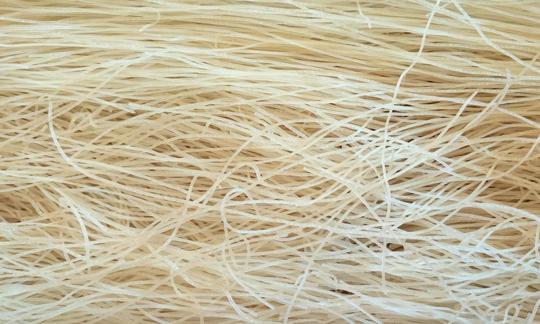

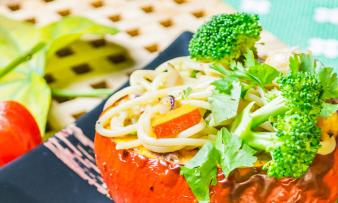
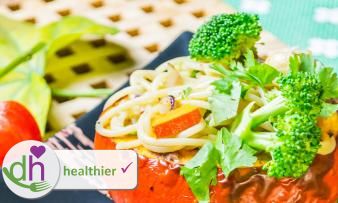
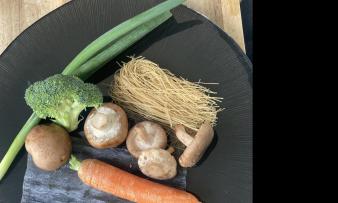

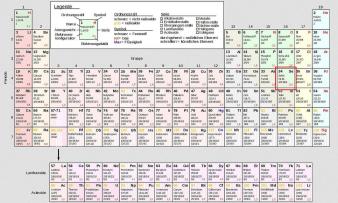



Comments